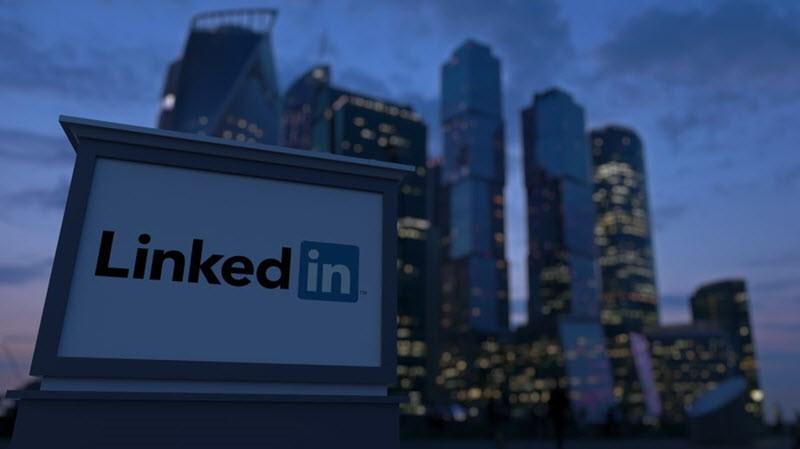If someone gave you the opportunity to attend a meeting where thousands of your prospects were also present, you’d be silly not to take them up on the offer…right?
This opportunity might be staring you in the face.
LinkedIn is the world’s largest database of professionals; hundreds of millions of professionals waiting there, ready to be connected with and engaged.
It really is a small business marketing dream. If you get it right.
The problem is that most small business owners are not using LinkedIn properly. Either they are targeting the wrong people; interacting with connections in the wrong ways; or they are simply inactive and expecting leads to come to them.
If you want to turn LinkedIn into a lead generation machine — and never cold call again — follow these 10 basic guidelines and watch your results start to improve…
- Talk to your target audience
Your profile should not read like a CV. It should speak directly to the wants and needs of your target audience — and demonstrate what you do to help solve their problems.
Really, nobody is interested in job titles, positions, or years of experience. You connect with people by explaining how you can improve their lives or solve their problems.
- Get the visuals right on your profile
On social media, a picture really does paint a thousand words. LinkedIn is no exception.
It’s firstly important to get a high-quality photo uploaded: you should look professional but approachable — smile! A poor quality photo that looks like a cheap passport photo with you standing against a plain wall is unlikely to make a good first impression. Invest in some professional photography for you and your team.
Secondly, your background image. Don’t waste this valuable space with a picture of your pet dog! Use it to instantly communicate to your audience what you do. Consider getting a customised image made that includes your main keywords. Again, invest in professionals here. Hire a designer to create your background image.
- Get found!
Did I just mention keywords? Consider that LinkedIn is a massive database and search engine. Including your main keywords in your headline, summary, and experience section will help you get found when your prospects search through LinkedIn.
In the headline section of your profile, keywords are weighted, so it’s especially important to use them here.
- Connect with prospects not peers
One big mistake that business owners make is to connect with too many industry peers. It can take up far too much time discussing industry matters — for little benefit.
It’s far better to use LinkedIn to build up a community of prospects. They are out there; you need to locate them and connect with them. Then you can start building a large network of potential leads.
- Send personalised connection requests
Very little meaningful communication on LinkedIn can be automated. Yes, you can design some basic templates for connection requests (with standard greetings and sign offs) but make sure the bulk of your interactions are personalised.
LinkedIn is about building relationships. You can only do that by getting personal. Templated messages are easy to spot and they break rapport from the get-go.
- Be interested in your prospects
Rather than telling them all about you, how about you give your prospects an opportunity to tell you about themselves? This will be far more productive in terms of uncovering problems and opportunities.
Remember — people love to talk about themselves. Let them do this and you will soon form closer relationships.
Your presence on LinkedIn should be focused on building the relationships that make up your community.
- Engage: Like, comment, share, suggest & endorse
There are many ways to engage with your community: liking their posts, commenting on posts, sharing content, suggesting solutions, endorsing them for skills…
All this shows interest in your community. And, with your face appearing in their LinkedIn feeds regularly, you start to become more familiar to your connections.
- Get really active
The big difference between those who claim they never get much out of LinkedIn and those who are killing it is activity.
Don’t expect results by logging in once a week and responding to messages. You need to be proactive.
Set aside time (45 minutes at least) each day to connect with new people, engage with them, and identify any opportunities for taking things further.
- Mix up your content
Text, images, video: your status updates offer several ways of communicating with your prospects.
Video is now more important than ever — but it’s not just the format of content that matters. It’s also the mix of topics.
Try to blend personal experiences, stories and philosophies with professional posts about results you have achieved and answering FAQs.
- Take the relationship off LinkedIn to sell
It’s surprising how many business owners are confused by this final tip. LinkedIn is not a sales tool — it’s a marketing tool.
It’s a superb platform for finding, connecting with, and engaging with prospects. This generates leads and opportunities. But converting these opportunities into sales needs to be done in the traditional way: offline.
The above ten tips will help you improve your individual profile and focus your activities. This is more important than your business page. People do business with people and, as a small business owner, this should be the focus of your time on LinkedIn.
Use LinkedIn to connect with a network, build a community of prospects, and to engage meaningfully with them. This way, you will naturally demonstrate your expertise and produce a long-term flow of leads to your business.
